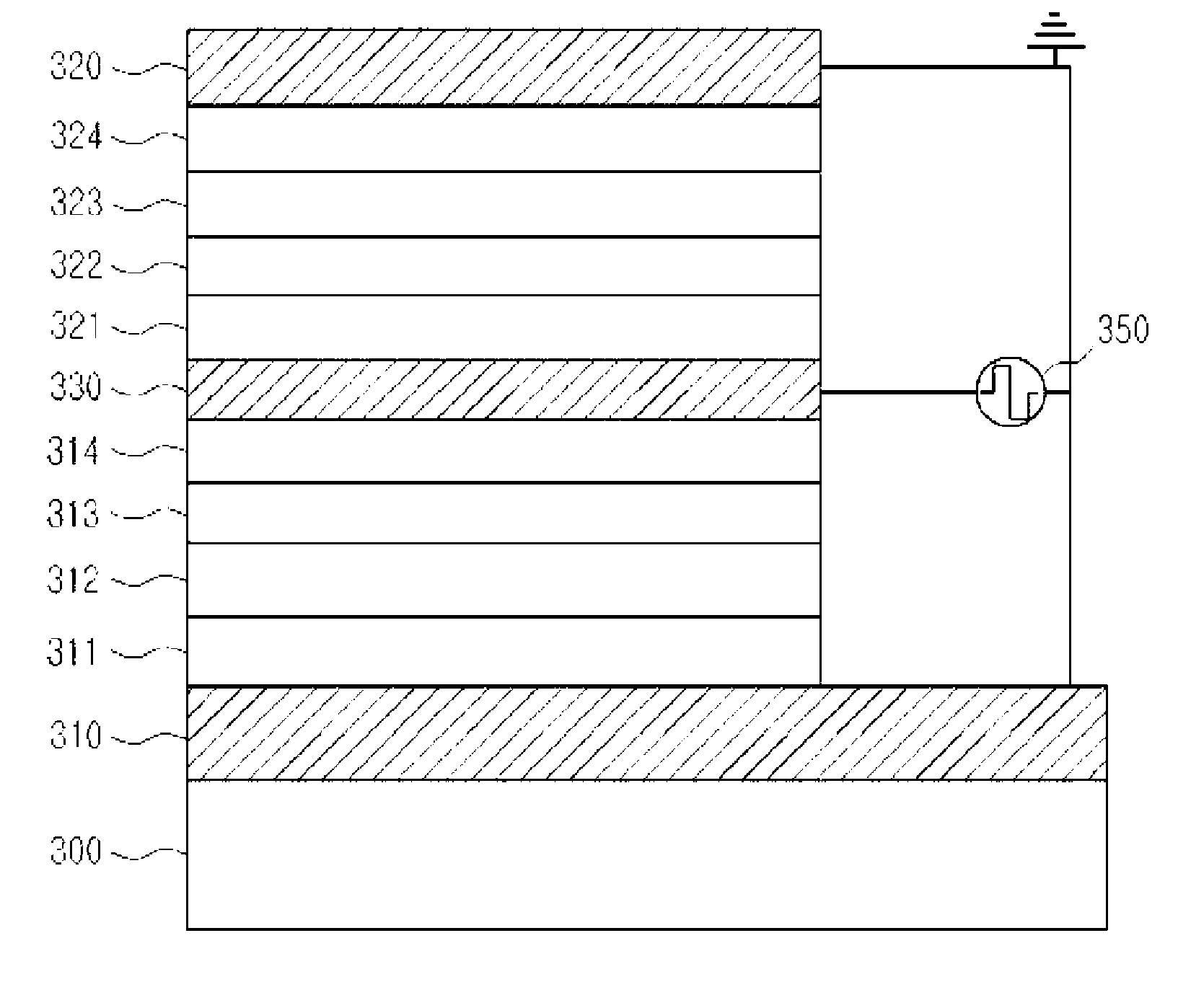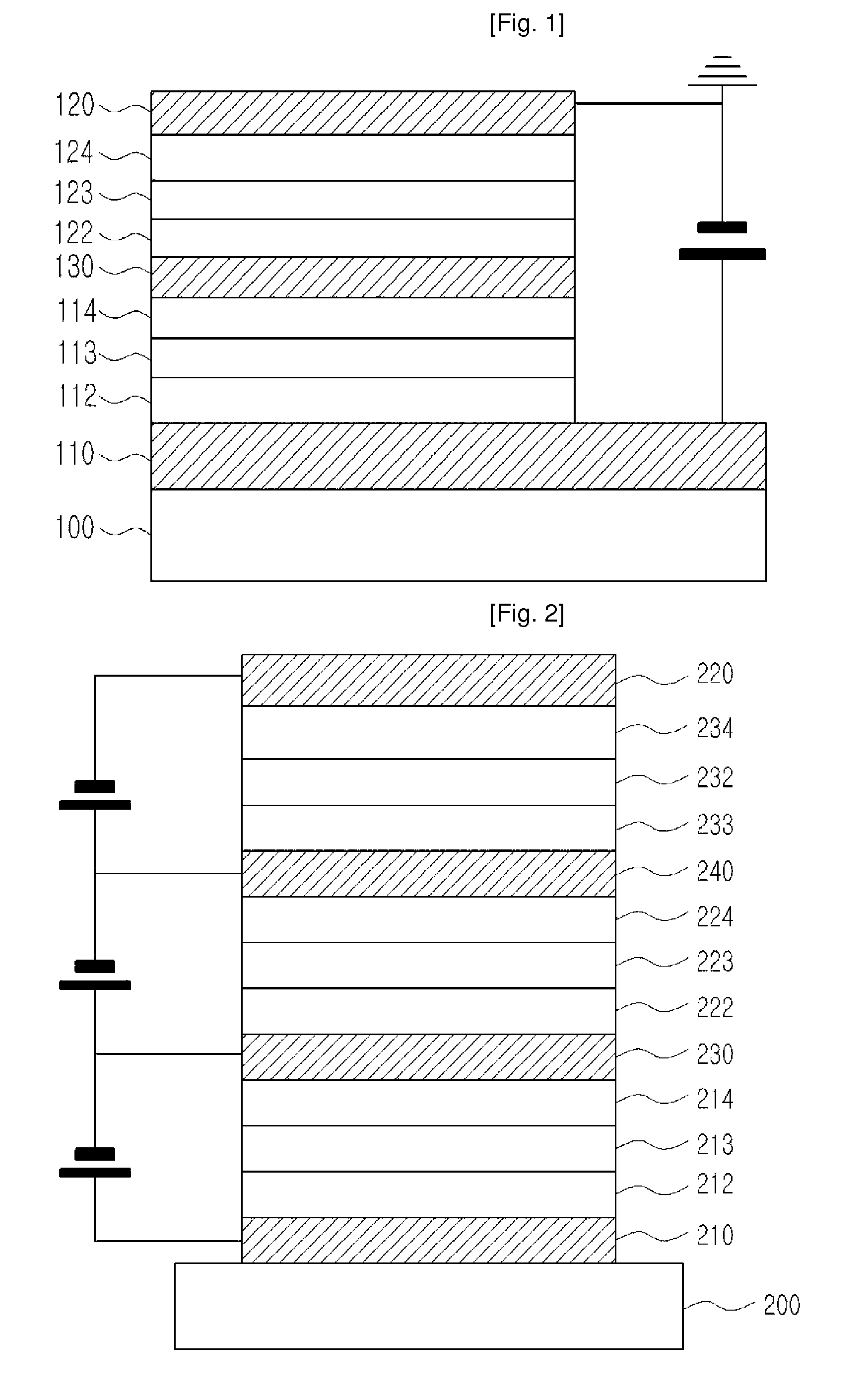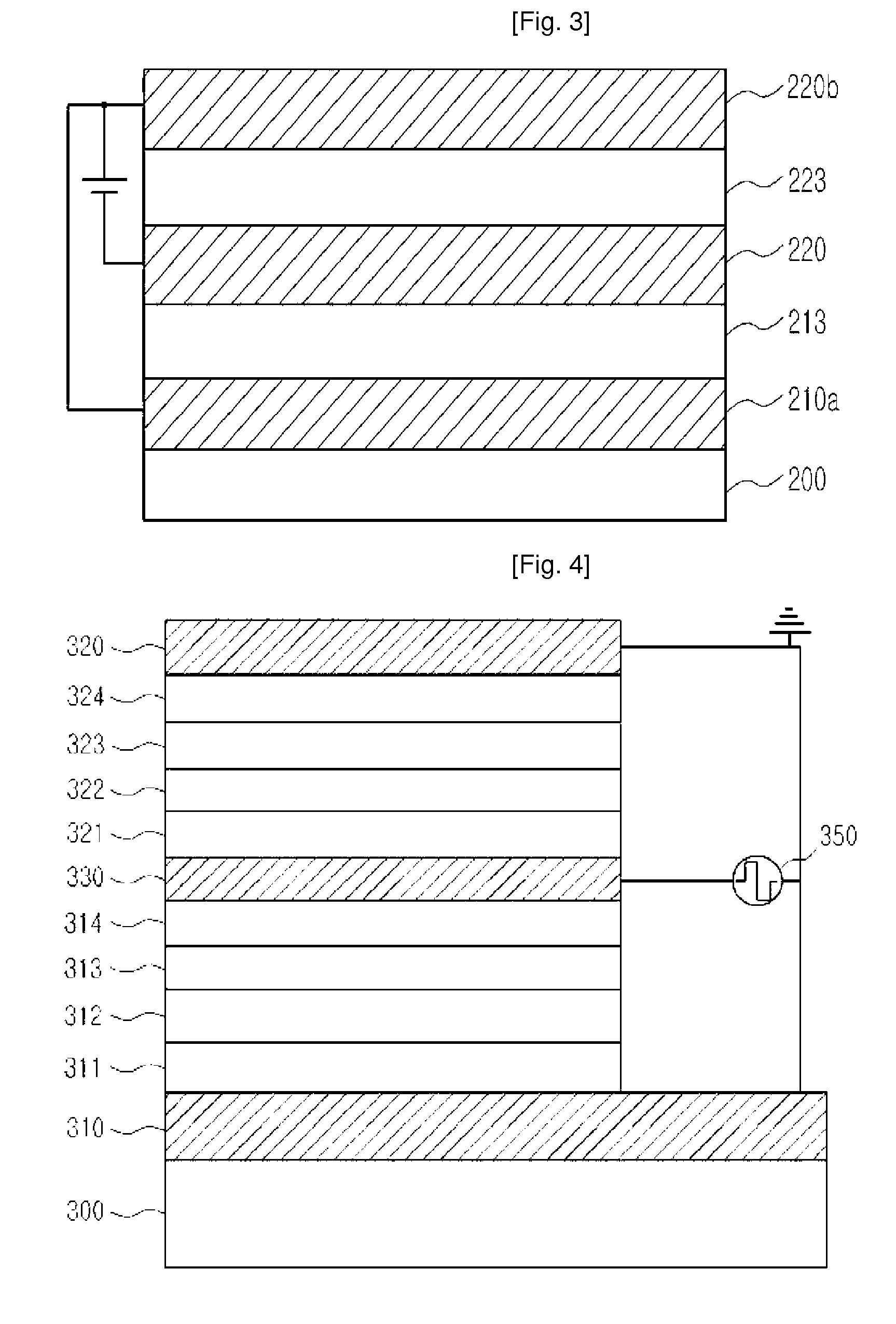Oled Having Stacked Organic Light-Emitting Units
a light-emitting unit and organic technology, applied in the field of stacking organic light-emitting devices, can solve the problems of deteriorating critical characteristics of the device such as light-emitting efficiency, difficult to inject electrons from the cathode to the light-emitting layer, and large increase in the operational voltage of the organic light-emitting devices, etc., to achieve high device efficiency and availability, and simplify the preparation process of the device.
- Summary
- Abstract
- Description
- Claims
- Application Information
AI Technical Summary
Benefits of technology
Problems solved by technology
Method used
Image
Examples
example 1
Double Stacked Organic Light Emitting Device
[0113]On a washed glass substrate, indium zinc oxide (IZO) was coated to a thicknesses of 1000 Å by vacuum deposition using a sputtering deposition apparatus, and on the formed conductive layer, HAT having the following structure was coated to a thicknesses of 500 Å by thermal vacuum deposition to form a transparent anode comprising the IZO and HAT n-type organic material layers.
[0114]Then, on the HAT n-type organic material layer, 4,4′-bis[N-(1-naphthyl)-N-phenylamino]biphenyl (NPB) was coated to a thicknesses of 400 Å by vacuum deposition to form a p-type hole transporting layer. On the p-type hole transporting layer, a blue host material represented by the following formula 2-1 was doped with a blue dopant material represented by the following formula 2-2 to a concentration of 2%, and coated to a thicknesses of about 300 Å by vacuum deposition to form a light emitting layer. Then, on the light emitting layer, the following imidazole com...
PUM
 Login to View More
Login to View More Abstract
Description
Claims
Application Information
 Login to View More
Login to View More - R&D
- Intellectual Property
- Life Sciences
- Materials
- Tech Scout
- Unparalleled Data Quality
- Higher Quality Content
- 60% Fewer Hallucinations
Browse by: Latest US Patents, China's latest patents, Technical Efficacy Thesaurus, Application Domain, Technology Topic, Popular Technical Reports.
© 2025 PatSnap. All rights reserved.Legal|Privacy policy|Modern Slavery Act Transparency Statement|Sitemap|About US| Contact US: help@patsnap.com



